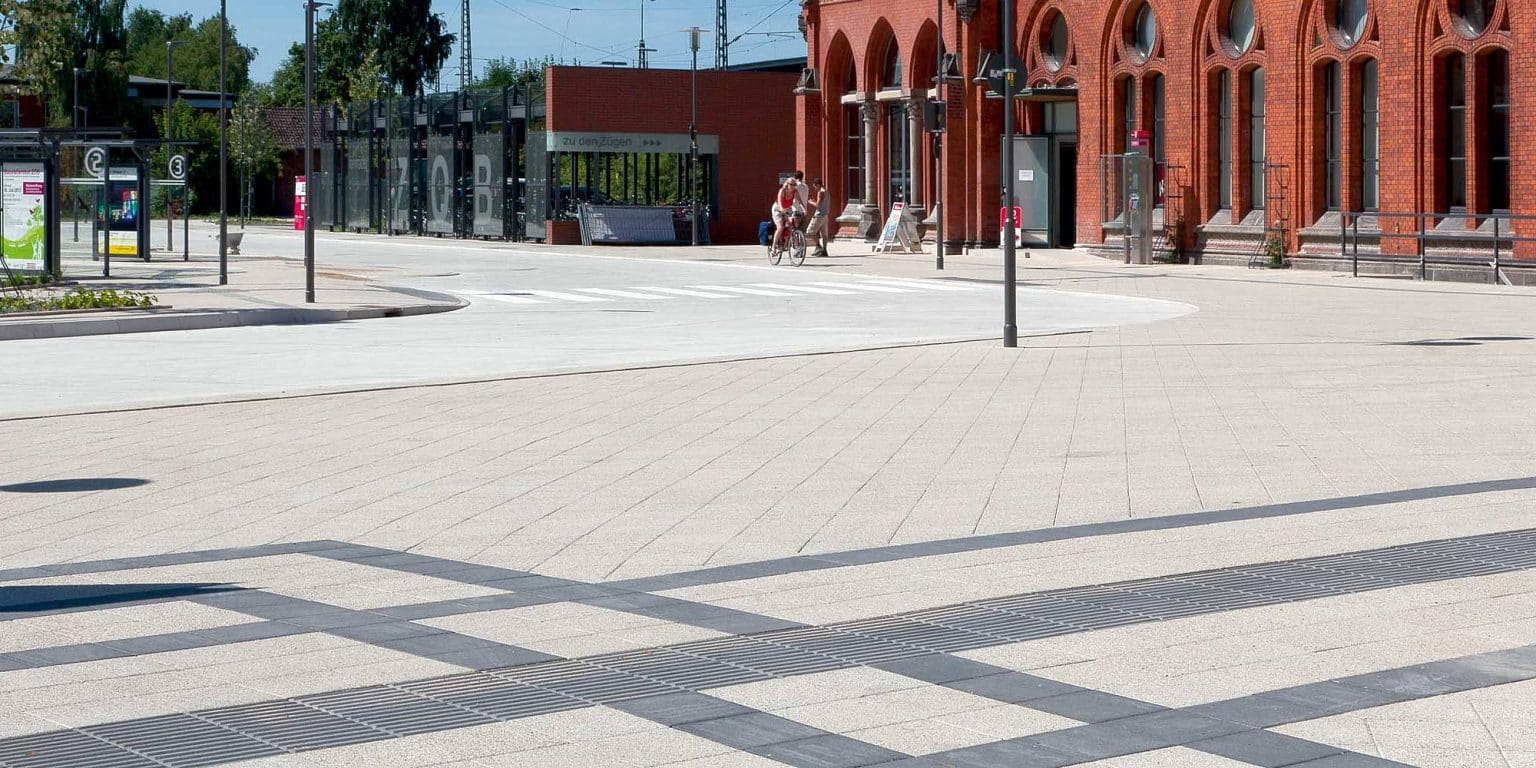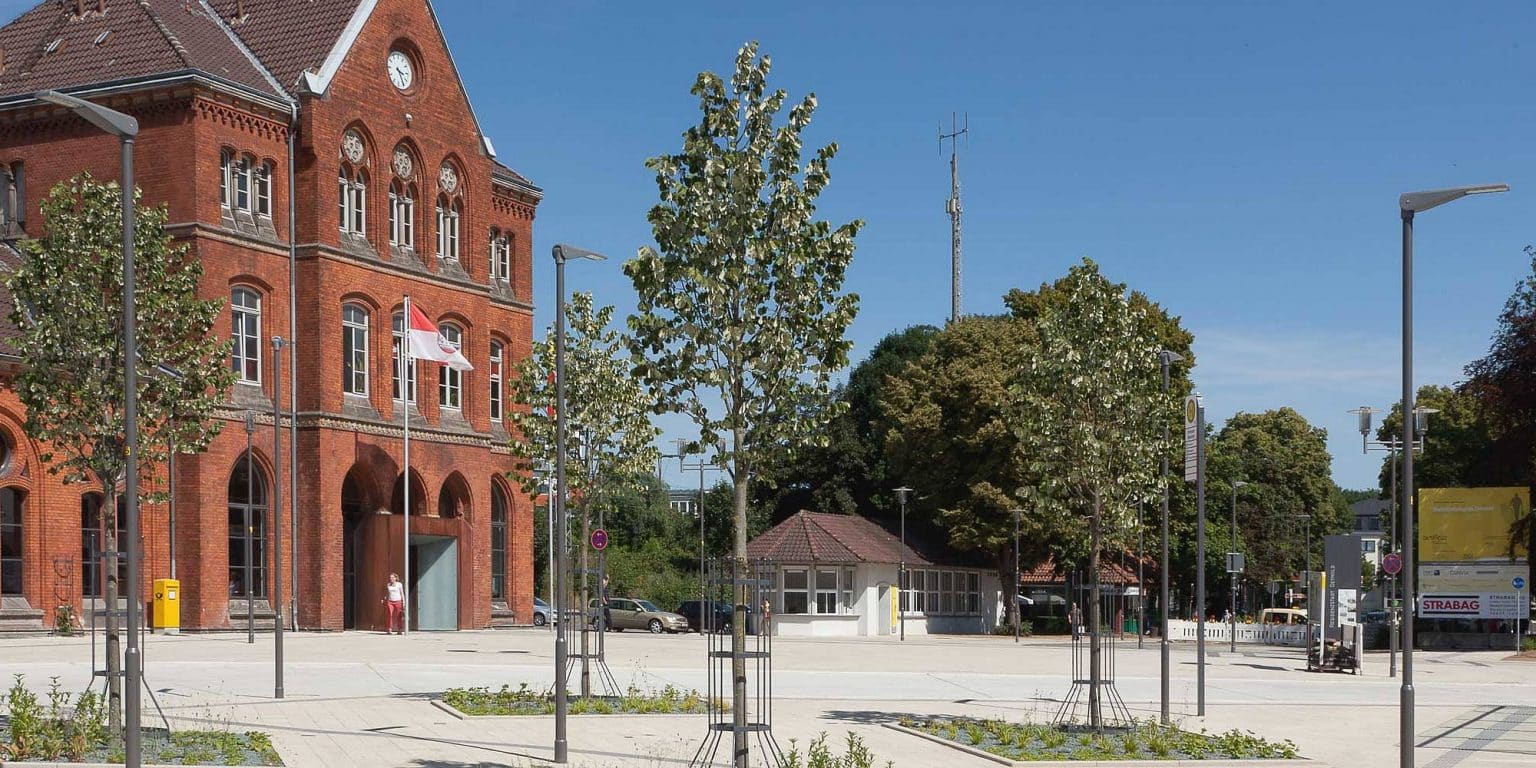
Stories
A breath of fresh air in the city
The concrete of tomorrow is more than just a construction or design material. Enriched with nano-particles, it cleans itself and helps to decompose pollutants. After being used in Rome and Mexico City, the first projects are starting to appear in Germany.
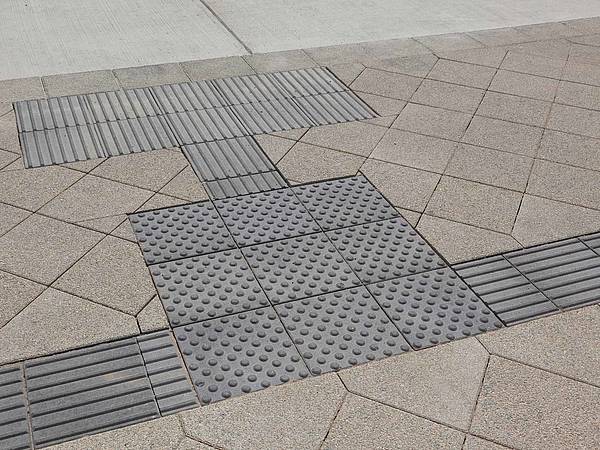
Emission regulations, environmental zones, electric cars: the government and industry are not short of ideas on how to reduce air pollution in the future. But what can we do with pollutants that are already in the air? Smart building materials like photo-catalytic concrete can be one solution that would lessen the burden on the environment.
To create this cleaning effect, nano-particles are added to the concrete. Titanium oxide (TIO2) is a white pigment that is added to paints, dyes and coatings as well as toothpaste and sun cream. UV rays create a chemical reaction, photocatalysis: the titanium dioxide acts as a catalyst turning organic materials such as dirt or nitrogen oxide into the water-soluble salts nitrates and nitrites. By adding water – the next time it rains – these harmless salts are rinsed from the surface. This reaction means that the concrete both cleans itself and reduces the concentration of pollutants in the surrounding air.
Die Einsatzgebiete für smarten Beton sind vielfältig, besonders weil das Titandioxid seine katalytische Wirkung lange Zeit behält. Photokatalytischer Beton kann sowohl an Gebäuden als auch im Straßen- und Verkehrswesen verbaut werden.
The areas of application for smart concrete are varied, especially because titanium dioxide retains its catalytic properties for a long time. Photo-catalytic concrete can be used in buildings as well as roads and other traffic structures.
One of the first large-scale construction projects to use photo-catalytic concrete was in Italy. Unveiled in 2003, the Chiesa di Dio Padre Misericordioso church in Rome stands out with its unique form: the American architect Richard Meier designed a 40 meter long building as a ship made up of three sails from 17 to 27 meters high. The building also stands out due to its gleaming white exterior, made from photo-catalytic concrete from the company Italicement. The added titanium oxide pigments repel dirt caused by the weather, resulting in a self-cleaning effect that keeps the façade clean in the long run. Using the same premise, smart materials were used to create the façade of the Air France headquarters in Paris-Roissy.
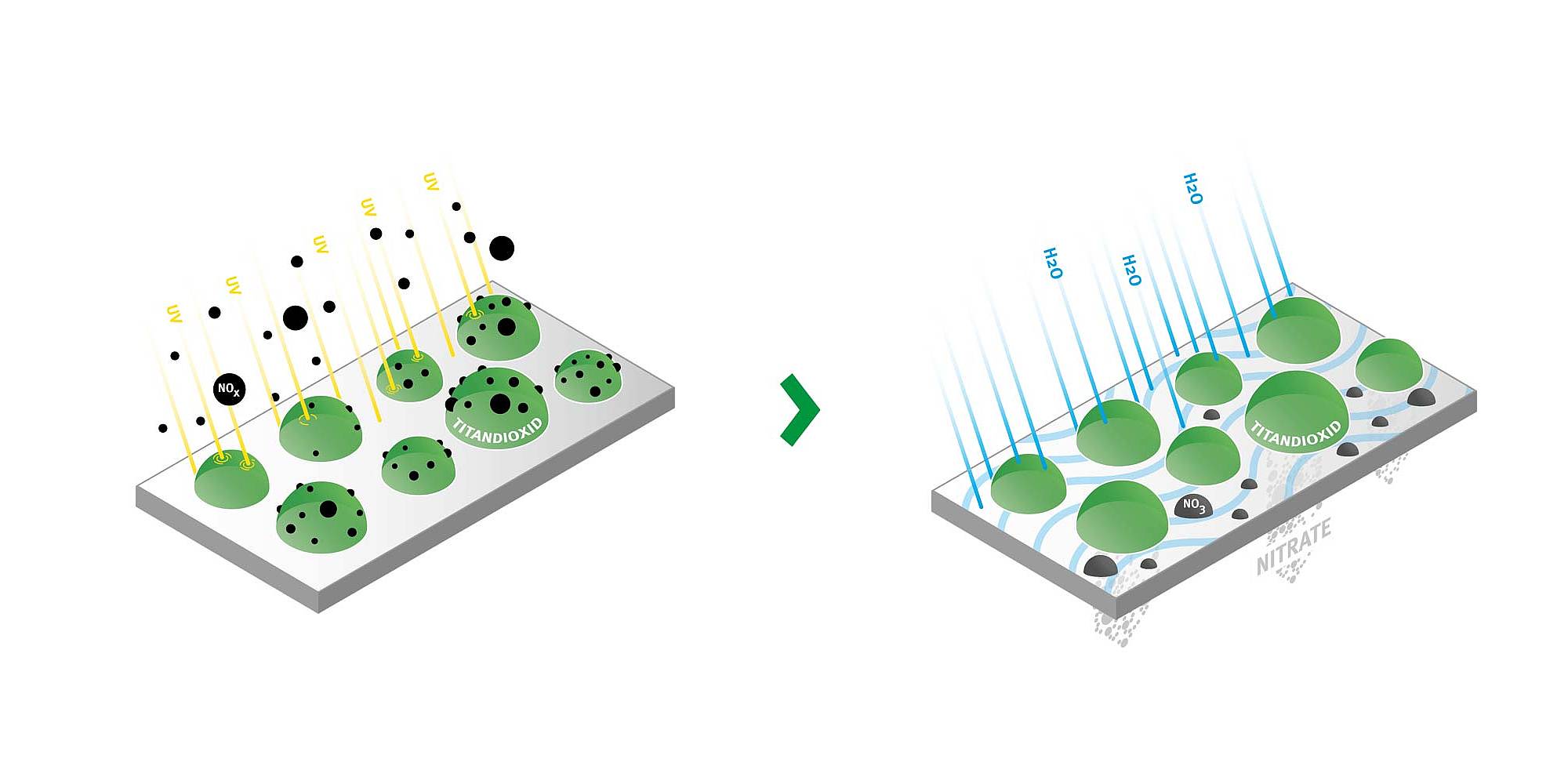
Additional costs, hard to prove
For a long time, the goal of replacing hazardous substances was met with reluctance. Regardless of the additional costs for using the special concrete, this reluctance was due to the difficulty of proving the merits of its use: a direct comparison requires the same concentration of pollutants on the photo-catalytic surface and the normal surface to be measured and evaluated. The surfaces must also be subject to identical amounts of sun, thermals and pollution. These conditions are difficult to manage outside a laboratory – especially as the levels of pollution in the air are very volatile.
A decade after the church’s construction in Rome, the titanium oxide coating was used in 2013 for the ‘Torre de Especialidades’ in the chronically polluted Mexico City. However: the façade is not made from concrete, rather coated plastic panels. A honeycomb structure stretches across 2500 square meters of façade, formed with just two elements. This complex structure increases the surface area by around 200 percent compared to a flat plane, maximizing the anti-pollution effect.
One of the earliest projects intended to reduce pollution in Germany was the plastering in the center of Fulda. The German Environmental Institute supported the use of smart construction materials to reduce pollution after measurements in the city center showed that air pollution had exceeded the annual limit. AirClean paving slabs from Nüdling, coated with titanium dioxide, were used. Wth support from the Frauenhof Institute for Molecular Biology and Applied Ecology, the company developed their own recipe for slabs that can reduce nitrogen oxide by an average of 20 to 30 percent, depending on weather conditions.
Coating vs. in-mass processing
Whereas the paving slabs used in Fulda were coated with titanium oxide, the Central Omnibus Bus Station (ZOB) in Detmold used in-mass processing: the titanium oxide was added to the concrete itself rather than simply applied to the surface. This process makes the concrete more resistant to the weather and mechanical erosion, which is an issue at the ZOB due to heavy traffic.
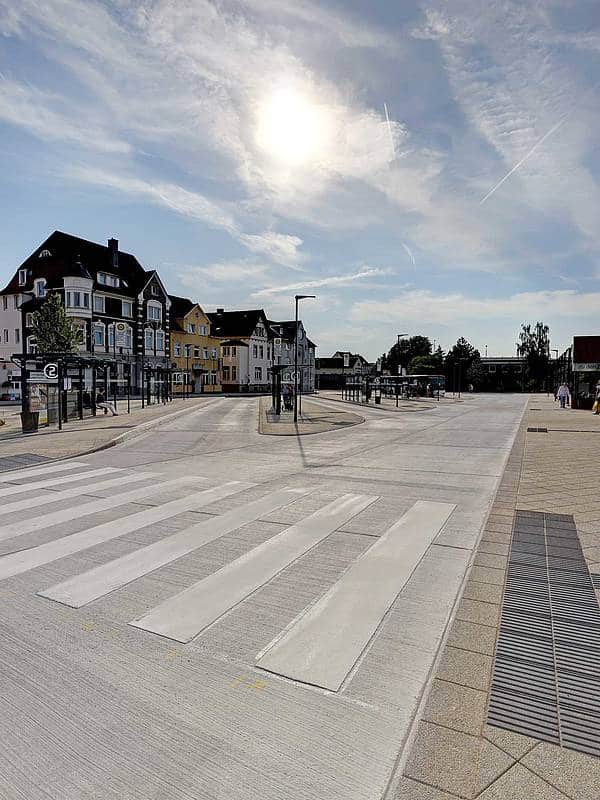
Opened in 2013, the ZOB in Detmold is a valuable testing ground: it encompasses around 700 square meters, includes over 11 bus platforms and is visited by 800 buses each day, resulting in enormous amounts of pollution. Those responsible for the project decided to cover the entire surface of the bus station with photo-catalytic concrete and titanium dioxide paving slabs. The German company Heidelberg Cement supplies the special element TioCem for in-mass processing for concrete surfaces. The plastered surfaces are equipped with AirClean paving slabs from Karl Vogt Betonwerk Westfalica GmbH. The entire slab can be replaced if damaged.
One new element of the project in Detmold is the ability to prove its effect: scientists from the Ostwestfalen-Lippe University opted for indirect demonstration: they didn’t focus on the nitrogen levels in the air, rather the waste products of photocatalysis in the run-off water: as the titanium oxide transforms dirt particles into salts, the levels of nitrates and nitrites in the run-off water will be higher from photocatalytic concrete surfaces than from standard concrete surfaces. The researchers set up various test surfaces to collect rainwater run-off. In addition to this, a climate station was set up at the ZOB in Detmold to measure significant climate data and nitrogen concentrations to allow more precise data correlation.
After the ZOB was opened, the researchers collected climate data until December 2014, including a total of 1329 water samples that were analyzed for nitrate levels by the Frauenhof Institute. The evaluation published in the summer of 2015 showed higher salt concentrations in the run-off water from the photocatalysis surface compared to standard concrete. The researchers estimated a reduction in pollution of up to 20 percent. The next logical step for the team: to use photocatalytic concrete for roads.
Photo: © Astrid & Falko Sieker | Rolf Dekker
